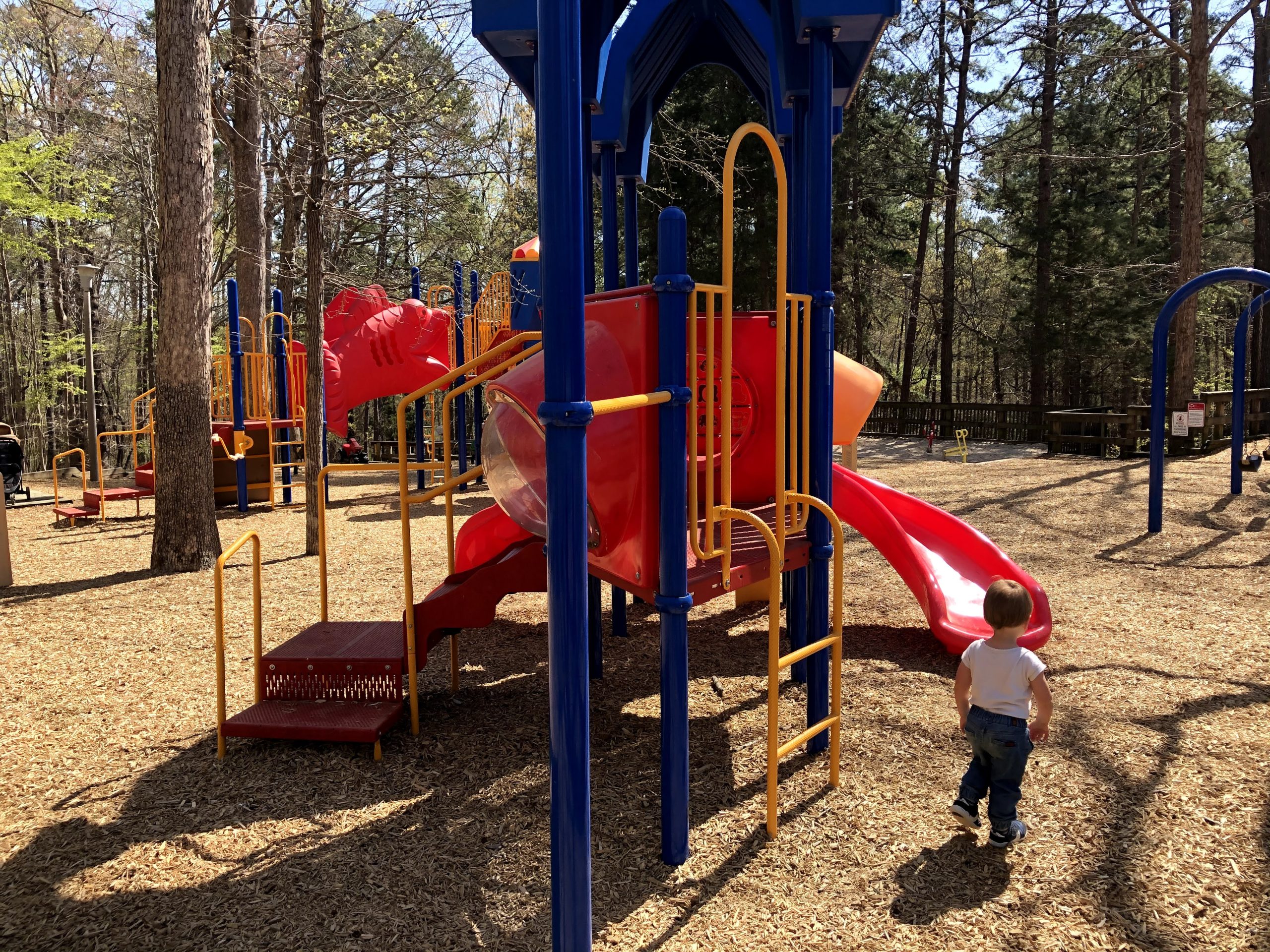[ad_1]
By Taylor Knopf
In recent years, North Carolina’s foster care system has had some high-profile failures, including child deaths and one notorious incident when a child was found handcuffed to a front porch with a dead chicken hung around his neck. These and other incidents led to reports critical of North Carolina’s foster care system from federal and private auditors.
There have also been several attempts at reforming the system over the past decade. While nearly everyone — from state and county leaders to health professions — believes big changes are needed, the latest proposal is causing some friction.
This legislative session, a bill that would create a single statewide health plan for children and families involved in the foster care system has passed the North Carolina Senate, and it is now making its way through the state House of Representatives. The idea is that if it’s easier for kids and their families to access services before there’s a crisis, some of the problems they experience could be avoided.
All North Carolina children who enter the foster care system are eligible for Medicaid health coverage, even when families who bring them into their homes have private insurance. Currently, the state’s six behavioral health management organizations (known as LME-MCOs) provide these Medicaid-based services to children within their respective counties. But if a child is being fostered in a county that’s not covered by their home county’s LME-MCO, this arrangement falls apart.
It’s been a problem for years.

If this bill passes, the foster care population would no longer be served by these six groups. Instead, they’d be covered by one statewide entity.
Child advocates, county social services directors and the state Department of Health and Human Services have worked together to create a Children and Families Specialty Plan. The goal in creating this plan was to fill some of the gaps in the child welfare system, said Karen McLeod, who runs Benchmarks, a nonprofit organization that advocates for children and families.
It would get services to children and families at risk of coming into the foster care system earlier and hopefully reduce the number of kids who end up taken out of their homes. The expectation is that a whole-family approach to treatment and health care access will also lead to children returning to or being placed in a stable, permanent home more quickly.
It’s “really taking a two-generational approach to child welfare — recognizing that children come with families, and that you can’t treat the child independently of the family unit if you wish the family unit to stay intact,” McLeod said.
This is a population that experiences a lot of trauma, and many need significant mental health support.
“It is important that all children receive the appropriate level of service, regardless of their home address,” said Sharnese Ransome, executive director of North Carolina Association of County Directors of Social Services. “Facilities and providers are not always available in the community for which families and children live; therefore, we have to seek services and supports outside of their communities.”
She added that a statewide system would be most successful at meeting these needs.
However, others are uneasy about shifting away from the current system of delivering health services to this population if the proposal — which has met roadblocks in the General Assembly in the past — becomes law.
County concerns
Aside from the geographical problem of finding care outside of a foster child’s home county, more than 50 children involved in the foster care system each week live in hospital emergency departments and county department of social services offices across the state. One DHHS child welfare leader described the situation as a crisis with the potential for a lawsuit. One hospital official told NC Health News last year that some children involved in the foster care system have lived inside their emergency departments for up to five months.
These are situations that have some leaders at the state level calling for change.
But since the introduction of the proposed single statewide plan, some LME-MCOs — along with the counties they serve — have pushed back against it. They’ve argued that the local relationships between the regional LME-MCOs and the counties they provide services to cannot be adequately replaced by a single statewide system.
But in the eastern part of the state, Trillium Health Chief Operating Officer Cindy Ehlers is more open to the idea. She said her LME-MCO is supportive of the statewide plan that expands services for children and families involved in the foster care system. She also argues that the current LME-MCO system is not designed to meet the complex needs of some of these kids.
“Building a more robust system that is targeted to children in foster care makes sense,” Ehlers said. “We know that’s long overdue. And we hope that whoever has the successor plan for this has the ability to develop the capacity this population needs and the right service mix, because that’s not been part of the design so far.”
Ehlers said some eastern North Carolina county leaders have reached out to her about the potential change and expressed concern about rural counties being overlooked under a statewide plan. She said they’ve wondered if they would have the same direct line of communication and response times that they currently have with Trillium.
“The population centers will pull a lot of capacity,” she said. ”Smaller counties are very worried.”
Other LME-MCOs agree there needs to be more investment in the care for the foster care population, but they don’t believe taking that responsibility away from their managed care organizations is the way to go.
“Improving care for these children requires collaborations among county DSSs, local providers and partners, and the organizations managing their healthcare because these stakeholders have the most direct connection with the children and families and the most direct understanding of their unique needs,” CEO of Alliance Health Rob Robinson said in an emailed statement. Alliance is the LME-MCO that serves the Triangle area, as well as Cumberland and Mecklenburg counties.
“Moving them outside of local management will be counterproductive to this goal,” he added. “Rather than disrupting these current collaborations, NC should build upon the existing LME-MCO model.”
Representatives from Vaya Health, the LME-MCO that serves counties in the western part of the state, have gone to local leaders to make their case against the statewide plan. Some county leaders sent letters of concern to the North Carolina DHHS Secretary Kody Kinsley, stating their wish to continue working with Vaya Health to serve children in foster care.
In one such letter, Watauga County commissioners wrote that the LME-MCOs, including Vaya, have improved their services. They referenced an improvement plan created by the six LME-MCOs last spring after a similar plan was floated in the legislature. The commissioners added that these changes make the statewide plan “less worthy of advancement now,” according to a recent report by the Watauga Democrat.
LME-MCOs have advisory boards made up of local members, and county leaders expressed concern that a statewide contract could go to a national insurance provider, leaving them with less input into the care for the foster care population. Their fears are not unfounded. States such as Georgia and Illinois have a statewide health contract with large insurers for their foster care population and have experienced issues with oversight and gaps in care.
The Watauga commissioners also argued in their letter that the foster care population will be appropriately served by the tailored plan model that’s in the works for patients with complex needs. After several delays, that plan is now scheduled to launch this fall and will be run by the LME-MCOs.
No ‘meaningful change’
After receiving several similar letters, Kinsley responded with a direct letter to the heads of the LME-MCOs last month, saying his department has not seen enough progress in behavioral health treatment for the foster care population.
Last year, Kinsley said that 235 children involved in the foster care system were referred to a newly formed team within his department because they were living in a hospital emergency department or a county social services office without access to a proper placement and treatment. The number of referrals is only increasing, he said.
Trillium’s Ehlers provided some context, noting that some of the LME-MCOs are trying to create programs and placements for these children but are stuck waiting for licensure approval from the state Division of Health Service Regulation. The state Department of Health and Human Services, including that division, has been struggling with high worker vacancy rates for a while, which have been exacerbated in the wake of the pandemic.
“If those programs were licensed, kids wouldn’t be sleeping in DSS offices, but they can’t get them through licensure,” Ehlers said.
Sign up for our Newsletter
Kinsley said he was aware of some applications for more creative requests that have required a more back and forth between the division and an LME-MCO, but he wasn’t aware of the specific delays Ehlers referred to.
The state health department recently launched an online dashboard tracking how many children in each LME-MCO catchment area were housed in emergency departments and county social services offices over a recent three-month time period. The dashboard shows many foster care children are in psychiatric residential treatment facilities, and it shows that about 40 percent of those children were placed out of state.

Additionally, of the group of patients the LME-MCOs are responsible for that are in state psychiatric hospitals, 41 percent are ready for discharge but have no place to go, according to the dashboard.
Since 2021, Kinsley wrote that there have been no improvements in the number of children with behavioral health needs heading to the emergency department and no improvements in hospital readmission rates. He said the length of psychiatric hospitalizations has increased for all adolescent age groups, and there’s been an increase in children being readmitted to psychiatric residential treatment facilities.
He said the continually high numbers speak to a lack of community-based services where kids and their families can get comprehensive help to reenter school and society and stay there. Over the same period of time, he wrote, there’s been a noticeable decrease in LME-MCO spending for some community-based services for children, such as intensive in-home treatment where a mental health professional works one-on-one with a patient.
“These data points are consistent with the feedback we have received from county DSS directors that they do not see meaningful change or progress towards the seamless, standardized access to quality care that is the stated goal of your NC Child and Family Improvement Plan,” Kinsley wrote.
While Kinsley acknowledged that there have been “pockets of progress,” he added that “the current pace and magnitude of change, however, is not in line with what these children need.”
Possible change for LME-MCOs
For two decades, the LME-MCOs have been tasked with managing behavioral health care for the most complex patients, from children in foster care, to people with intellectual and developmental disabilities, to the uninsured, to those with Medicaid coverage. The problems surfacing during the foster care health plan debate have prompted larger conversations about what the future of the LME-MCOs might look like.
“They manage and perform a lot of the old vestiges of the community mental health system,” Kinsley said in an interview. He praised the complex work the LME-MCOs have done in transitioning people with disabilities out of institutions and into community living, as well as the services they provide through the Medicaid Innovations waiver to people with disabilities.
Kinsley added that their scope of responsibility is very broad and that they’ve tried to be “all things to all people.” He said now could be an opportunity for the LME-MCOs to “focus and lean into their strengths.”
The failures of the adolescent mental health system didn’t happen overnight and cannot be laid at the feet of any one group, he added.
“The legislature has been underfunding kids and mental health for a very long time,” Kinsley said. “And I hope, this budget session, that we’ll see some really meaningful and overdue investments in mental health and for kids — and that we can then take those investments and plug them into a system that’s actually designed for better success.”
Rep. Donny Lambeth (R-Winston-Salem), a co-chair of the legislature’s House Health Committee, said state lawmakers need to meet with the heads of the LME-MCOs and better define their role moving forward.
“We need to be pretty honest with them,” he said. “There’s a variety of opinions about how well they do. Some feel like they do a really good job, some feel like they need to be eliminated completely.”
“My thought is that they have a role and they need to figure out their niche in the health care delivery system,” Lambeth added. “I just think they try to do too many things. And they need to focus on a few really high-priority things that they do really, really well.”
[ad_2]
Source link







